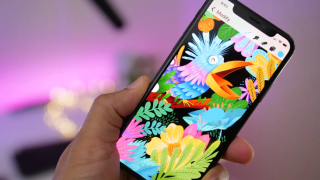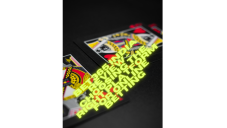Experts Successfully Trained An AI To Fix Distorted Underwater Pictures
Aadhya Khatri - Jan 02, 2020

The AI has the ability to de-haze images with green tones without ruining the original structure of the pictures
- 4 Ways AI Could Change The Mobile Gaming Industry
- Google To Support 1 Million Women Entrepreneurs In Rural India
- Google May Be Working On A Foldable Phone That Looks Like This
As a result of back-scattering and light attenuation, pictures taken underwater tend to be distorted and blurry. To save photos affected by these phenomena, experts from the Harbin Engineering University proposed a solution, which comes in the form of two AI systems, one can produce realistic underwater pictures, the other learns from what the first one makes and then fix the distorted images.
The team pointed out that the majority of other picture-enhancing systems work without taking the physical imaging models into consideration, so they do not exactly do the task well.

The first AI is called GAN and it is trained with a corpus of 3,733 scenes with labels and their depth maps, mostly consist of sea cucumbers, scallops, sea urchins, and other underwater organisms living in marine farms. They also used some other open datasets, like NY Depth, a library of thousands of photos taken underwater.
After some tests, the researchers said that their approach has the following advantages over others. The first one is the uniform in color restoration; the second is the ability to de-haze images with green tones without ruining the structure of the pictures. The last benefit is that the system is able to maintain the color contrast and brightness over the process.
Experts from Harbin Engineering University were not the first ones to try restoring distorted pictures. We have seen DeepRay, Cambridge Consultants' Digital Greenhouse internal incubator. It was trained with 100,000 still pictures distorted by an opaque pane of glass. Another effort results in DeOldify, a system that can restore and colorize old footage and images.
Microsoft also has its fair share of the work in the form of automatic video colorization. Google has its own algorithm for grayscale colorization without the supervision of humans.
Featured Stories

Features - Jan 23, 2024
5 Apps Every Creative Artist Should Know About

Features - Jan 22, 2024
Bet365 India Review - Choosing the Right Platform for Online Betting

Features - Aug 15, 2023
Online Casinos as a Business Opportunity in India

Features - Aug 03, 2023
The Impact of Social Media on Online Sports Betting

Features - Jul 10, 2023
5 Most Richest Esports Players of All Time

Features - Jun 07, 2023
Is it safe to use a debit card for online gambling?

Features - May 20, 2023
Everything You Need to Know About the Wisconsin Car Bill of Sale

Features - Apr 27, 2023
How to Take Advantage of Guarantee Cashback in Online Bets

Features - Mar 08, 2023
White Label Solutions for Forex

Review - Jul 15, 2022
Comments
Sort by Newest | Popular